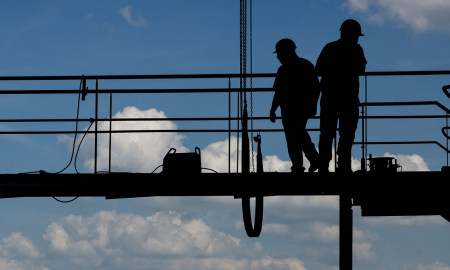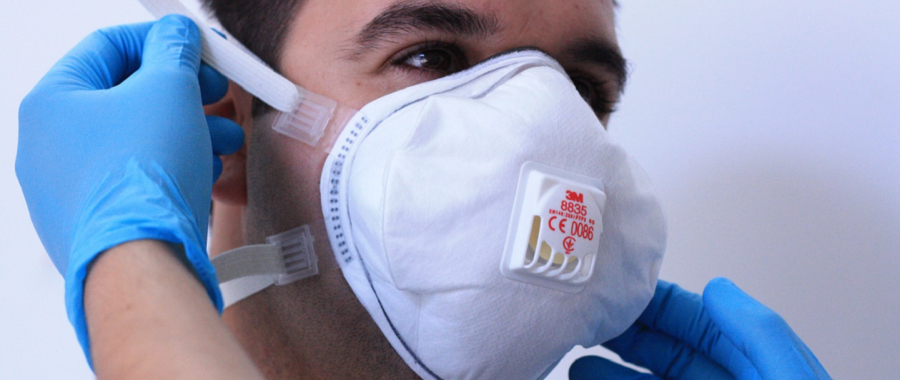Spotlight on Working at Height
Despite all of the safety advice and guidance given since the introduction of the Work at Height Regulations 2005, there are still a disproportionate number of completely avoidable fall from height accidents and incidents resulting in fatal or life-changing injuries.
Our highly qualified specialists can provide help and guidance in managing your work at height, and work with you to develop a synchronised safety offering that could help prevent your workforce from becoming a statistic.
Despite all of the safety advice and guidance given since the introduction of the Work at Height Regulations 2005, there are still a disproportionate number of completely avoidable fall from height accidents and incidents resulting in fatal or life-changing injuries. This is evidenced by the reports in safety newsletters, updates or press releases that drop into our inboxes almost daily. It is also clear that fatalities and major injuries are spread across all industry sectors. Working at height is an everyday occurrence on the railway, whether it be OLE engineers working on mobile elevated working platforms (MEWPs) or rolling stock technicians working on raised platforms in depots.
Statistics provided by Reporting of Injuries, Diseases and Dangerous Occurrences (RIDDOR) recently published by the Health and Safety Executive (HSE) delivered the following key figures regarding falls from a height;
- 40 fatal injuries (4 more than the annual average in 2014-18) – 27% of all fatalities
- 5445 non-fatal injuries – 8% of all non-fatal injuries
Unfortunately, it is difficult to give similar hard and fast numbers solely for the rail industry due to falls from under 2m being reported within ‘slips, trips and falls’ rather than ‘falls from height’ (contrary to WaHR guidelines). However, the Office of Rail and Road (ORR) has put a greater emphasis on the risk of working at height on bridges and viaducts over the past few years and is working with the industry to identify and assess hundreds of locations around the country where measures, such as handrails and barriers, are needed to reduce that risk. Please refer to https://orr.gov.uk/rail/health-and-safety/annual-health-and-safety-report for more detail.
Work at Height Regulations 2005
Although multiple pieces of legislation are in place to enforce and encourage safe working at height, the primary document we should be referring to when intending to work at height is the Work at Height Regulations 2005 (WaHR). These regulations apply to all work at height where there is a risk of falling that is liable to cause personal injury. There is no minimum height at which they apply as the risk is related to what the person could fall onto as well as the height of the fall. The regulations also concern protection of persons from being struck by falling objects or persons.
The Regulations outline a hierarchy of control measures which should be systematically applied to ensure that everything reasonably practicable has been done to prevent anyone from falling and injuring themselves.
Practical Guidance
Can we AVOID working at height in the first place?
Can we relocate serviceable equipment to ground level, use extendable tools for cleaning and maintenance or use drones or other technology for surveys?
If working at height cannot be avoided, can we use a SAFE PLACE to work from?
Can we use work equipment such as mobile elevated work platforms (MEWPs)?
Can we switch out ladders and stepladders and instead use podium steps, mobile towers and fixed scaffold?
If we have no alternative and we must work at height without a safe place, can we PREVENT a fall from happening?
Can we use collective protection (parapets, guardrail, demarcation systems, fall proof covers)?
Can we use personal protection (work restraint ‘mansafe’ or ‘deadweight’ anchors using the appropriate fall restraint PPE)?
If working in fall prevention is not possible, can we MINIMISE the consequence of that fall with suitable PROTECTION?
Can we use safety nets and soft landing systems such as airbags?
Can we use personal protection (fall arrest ‘mansafe’ or ‘deadweight’ anchors using the appropriate fall arrest PPE)?
Can we use specialist height workers such as Rope Access Technicians or Steeplejacks?
If using ladders, can we secure the ladder and can we use appropriate fall protection equipment and anchors ideally overhead to minimise the fall?
By repeatedly asking ourselves these questions, we can also identify the correct level of training and monitoring necessary for our workplace. We can then ensure that we create suitable safe systems of working and produce the appropriate Method Statements and Risk Assessments necessary to manage risk and fulfil responsibilities to ourselves and our workforce.
How can SOCOTEC help?
Our highly qualified specialists can provide help and guidance in managing your work at height, provide suitable and sufficient training, audit and inspect your workforce and work with you to develop a synchronised safety offering that could help prevent your workforce from becoming a statistic.
Relevant documents for further reading include the following:
Code of practice for selection, use and maintenance of personnel fall protection systems and equipment for use in the workplace BS 8437:2005.
Work at Height Regulations 2005 (WAHR) SI 2005/735 as amended.
Construction (Design and Management) Regulations 2007 SI 2007/320.
Personal Protective Equipment Regulations 2002 SI 2002/1144 and amendments.
Personal Protective Equipment at Work Regulations 1992 SI1992/2966 and amendments.
Provision and Use of Work Equipment Regulations 1998 (PUWER) SI 1998/2306 and amendments.
Does your organisation require support with the management of work at height?
Our team of highly qualified specialists can help.






Add new comment